Philadelphia, Pennsylvania
October 2000
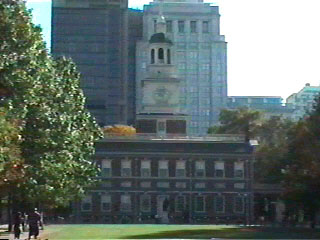
Independence Hall
|
The First Continental Congress met in Carpenters Hall,
(not shown), in September 1774. Being the principal city of the colonies
and mid way between the north and south, Philadelphia was a logical choice.
Carpenters Hall was exactly that, a meeting place for the master carpenters
to meet and share their trade and techniques. |
The first congress met to address a declaration of rights
and grievances submitted to King George III. The delegates agreed
to boycott English goods and resolved to hold a second congress should
England not address their grievances.
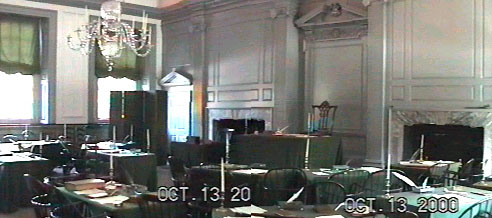 |
In 1774, most Colonists thought that things could be
worked out with England, but that would be like a teenager saying, "Mom,
Dad, I think we can work this out." |
This photo is the interior of the Philadelphia State House,
better known today as Independence Hall.
The people that had come to the colonies were independent
and adventurous by their very nature. The Second Continental Congress
gathered at the Pennsylvania State House on May 10, 1775. By this
time armed conflict had broken out in Lexington and Concord across the
river from Boston. Now the delegates were called upon to direct a
war. In 1775 there was still a diverse collection of opinions towards
England and ideas on how to settle matters.
In June of 1776, Virginia delegate Richard Henry Lee offered
a resolution declaring, "That these United Colonies are, and of right ought
to be, free and independent States." By July 2, 1776 The delegates
found themselves in the room above signing the Declaration of Independence.
Now all they had to do was convince England.
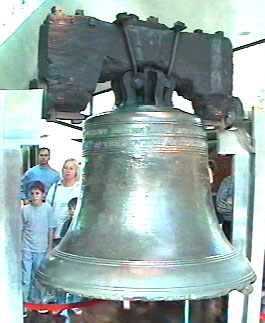 |
Here's the Liberty Bell. The infamous crack is
on the other side by Cheryl and the boys. This bell was just that,
a bell, until the Civil War when 19th century abolitionists who sought
to end slavery first gave it this name. Cheryl was quite shocked
to learn that this legendary bell was not part of the our revolutionary
past. |
In a similar way the name, Independence Hall, was not an
original name. The Marquis de LaFayette, who was like son to George
Washington and an important member of his staff during the Revolutionary
War, came to Philadelphia years later and insisted on seeing the "Hall
of Independence", the place where political freedom began. Then again,
standing in front of the State House, he made a statement to the people
traveling with him referring to this building as the Hall of Independence.
Well, the name stuck.
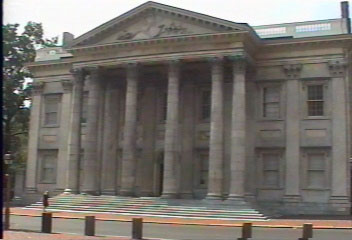 |
This is the "First Bank of the United States." |
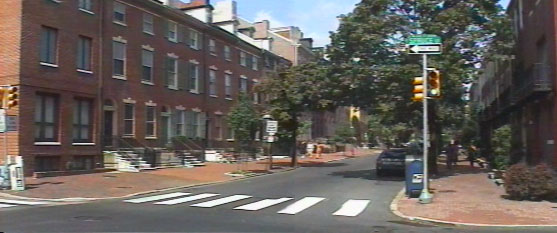 |
Similar to Boston, many of Philadelphia's streets are
narrow. The side streets are wide enough for just one horse drawn
carriage. At least here the streets are laid out in a grid for the
most part. |
Philadelphia was considered one of the most modern,
intellectual cities in the world during the late 18th century. Most
of the buildings in this part of town were built in the 1700's, just about
all of them using red brick..
| Here, Mitch and Max are in Christ Church in George Washington's
pew. Like many older churches it is surrounded by a cemetery with
many interesting names and stories.
We also saw pews marked with Washington's name in Boston
and Williamsburg. |
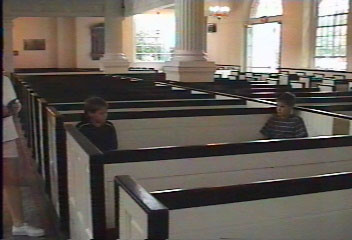 |
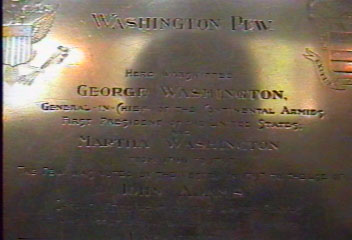
The Plaque from Washington's Pew
|
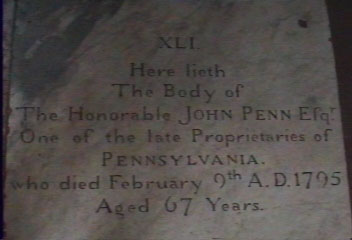
John Penn's Grave
|
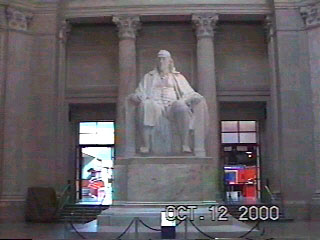 |
Here's a statue of Benjamin Franklin in the entry of
the Franklin Institute. The Institue is a huge science museum.
It has a great collection of science and industrial history displays. |
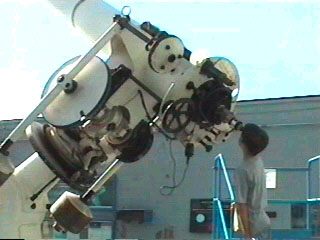 |
On the roof of the Institute we had a chance to look
at the sun through this filtered high power telescope. We could see
sun spots and flares. Again, we were able to tell the boys that this
was also our first time to actually look at the sun other than in books
or on television. |
| Across town, near Independence Hall, we visited Benjamin
Franklin's home and saw a 1700's model printing press stamping out copies
of the Declaration of Independence. There are so many historic sites
in Philadelphia that we didn't see that a second trip will be in order. |
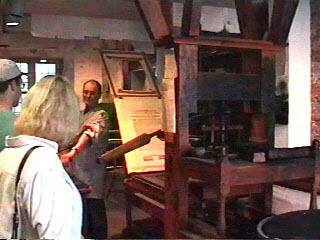 |
I'll also mention South Street, about five blocks south of
the historic area. It's a lively street with lots of pubs, restaurants
and shops that give it a college town atmosphere. On South Street
you'll find Jim's Steak, home of some very delicious and famous cheese
steak sandwiches. It's a small place where you
line up to get your sandwich as four guys toss the steak and assemble the
sandwich. It seems there's always a line.
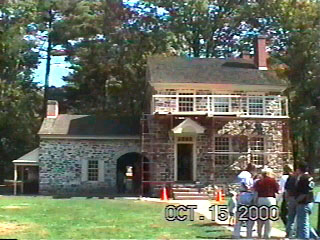 |
We also visited Valley Forge, to the west of Philadelphia
across the river. This is the house that George Washington rented
and turn into his headquarters.
I always figured Valley Forge was a battle location.
However, no battles were fought here. This is the location were Washington's
Army camped for the winter of 1777-1778. |
It's on a hill across the river from Philadelphia, which
was then occupied by the British. It provided a place that was close
enough to keep an eye on the British and to train the recruits for war.
It also kept the British from occupying the western farm lands. There's
a lot more to the story of Valley Forge, but we need to get going to Europe
this week so you'll have to visit this place for yourself.
ã
copyright Nodland 1999-2020












